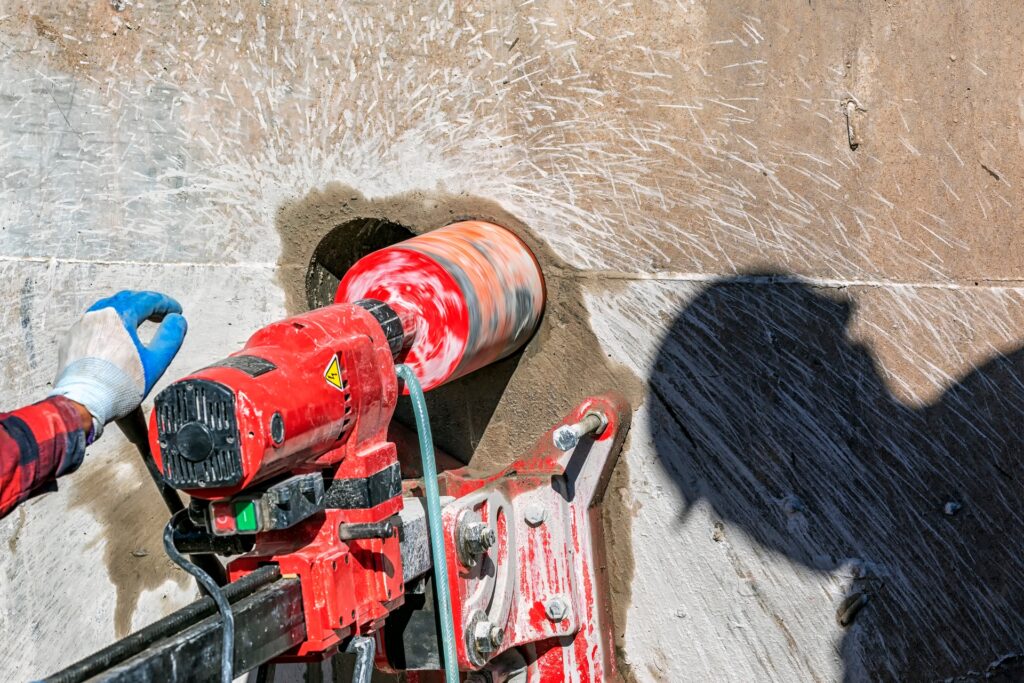Concrete coring creates precise cylindrical holes in concrete for tasks like installing plumbing, electrical conduits, or extracting samples for testing. If you need to core concrete, there’s a lot of preparation to conduct to ensure a safe and effective process. Below, we explain what you need to know before coring concrete, from safety precautions to coring techniques and more.
Understanding Concrete Coring
To core concrete requires powerful drilling machines with special diamond-tipped core bits. These machines rotate the bit while applying downward pressure, cutting through concrete, rebar, and other materials. The process produces clean, round holes with minimal cracking or structural damage.
Core bits come in various sizes, typically ranging from one inch to several feet in diameter. Wet coring uses water to cool the bit and control dust, while dry coring relies on vacuum systems for dust collection. Most professionals prefer wet coring because it extends the bit life and produces cleaner cuts.
Essential Safety Precautions
Safety always comes first during coring operations, as the equipment produces extreme noise, dust, and vibration that can pose serious health risks. Use personal protective equipment like safety glasses, hearing protection, dust masks, hard hats, and steel-toed boots. Work gloves shield your hands from sharp edges and hot equipment, while high-visibility clothing is crucial when working near traffic or heavy machinery.
Before starting, secure the work area and ensure proper ventilation. Clear loose debris, check for stable footing, and verify that electrical connections meet safety standards.
How To Prepare for Coring
Accurate marking and measurement will help you avoid costly errors and structural damage. Use tools like chalk lines, templates, or laser levels to mark hole locations precisely, and always double-check measurements against architectural drawings before drilling. One of the reasons to scan concrete before coring is to preserve its structural integrity and confirm there are no hidden utilities or obstructions within the concrete you’re coring.
Document any existing cracks, damage, or structural concerns, and take photos of the work area to protect against future liability claims. In occupied spaces, notify building occupants about potential noise and dust disruptions to minimize inconvenience.
Effective Coring Techniques
Finally, you need to know the proper technique before coring concrete. Begin by drilling slowly to establish the hole and prevent bit wandering, applying steady downward pressure while letting the bit do the work. Avoid excessive force, as it can damage the bit or create uneven cuts.
During wet coring, monitor water flow to confirm proper cooling and dust suppression, as insufficient water can cause premature wear and poor cut quality. Pay attention to changes in drilling resistance, which may indicate different materials or voids in the concrete, and adjust drilling speed and pressure when necessary.
Planning Leads to Success
Successful concrete coring requires careful preparation, the right equipment, and strict safety measures. Understanding your project’s specific needs and challenges is key before starting. For complex tasks, professional contractors offer the expertise, tools, and insurance needed to handle demanding projects effectively.
